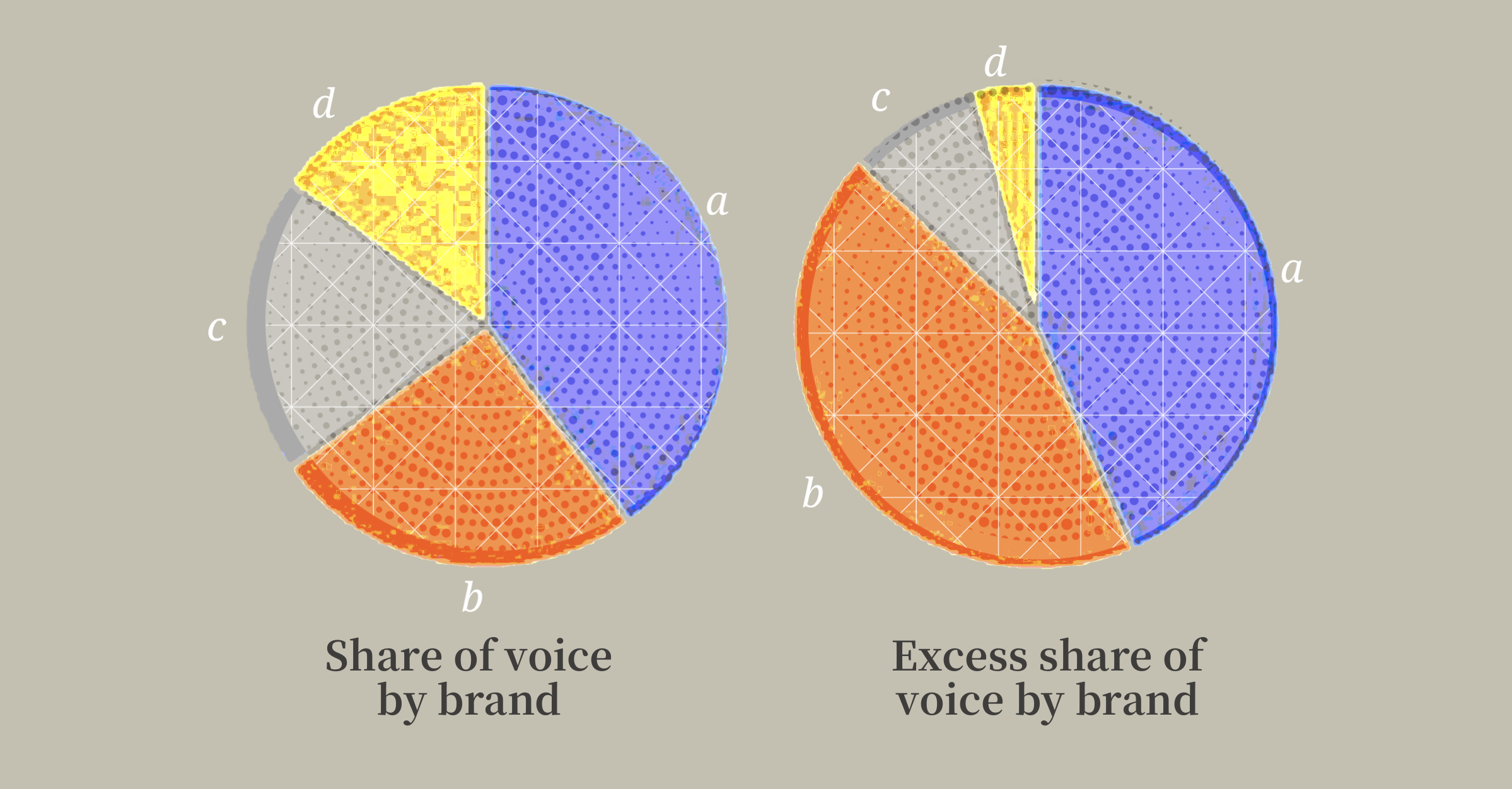How excess share of voice helps PR reporting
When it comes to demonstrating the value of marketing tools, don’t underestimate this important metric…
Reporting on PR can feel like an exercise in wrestling clouds and herding cats. While it’s easy to understand what’s been done as far as outputs are concerned, it can be much harder to get a clear idea of what that’s got to do with the pesky business of creating commercial impact.
Despite there being a wealth of studies and literature on the topic of effectiveness, some of which can be applied to PR, I don’t think we’re very good at rectifying this.
But first a disclaimer. My job largely involves using PR as a B2B marketing tool, which is the perspective of this blog. There are, of course, other applications that I’ve not covered, but hopefully my thoughts will be useful to people in a similar line of work.
One metric that’s becoming increasingly common across marketing and related disciplines is excess share of voice (ESOV). I think this can play an important role in helping to demonstrate the value of PR activity, not only in defining how you’re doing against the competition, but also proving how your activity is contributing to business growth. While PR has other benefits in terms of how you interact with your audience, using ESOV allows you to get a more meaningful handle on its impact from a marketing perspective.
So why ESOV? In a 2021 article titled ‘To ESOV and beyond’ for WARC, marketing effectiveness mavens Robert Brittain and Peter Field observed that the impact of marketing on the audience’s mental availability is driven by three factors: budget, media channel and creative strength. While it can’t express how you’re performing in terms of creative strength, using share of voice (SOV) – how your coverage stacks up against competitors – is a great way to understand the efficacy of the other two factors.
But this only tells part of the story. While SOV allows you to broadly map how your activity is working against competitors, it doesn’t reflect how this relates to the share of market (SOM) of the companies monitored. For example, a brand may have 10% greater SOV than its nearest competitor, but if its SOM is 50% higher – and by implication it has a bigger marketing budget too – then a 10% lead isn’t anything to shout about.
Using ESOV – how a brand’s SOV relates to its SOM – provides a more equitable metric. That’s demonstrated by the graphs featured here, showing how brand B’s apparently modest SOV is actually a significant overperformance when you factor in its SOM. Conversely, the seemingly solid performance of brand D is, in fact, much less significant in relation to its healthy market share.

What’s more, further work by Brittain, Field and others has shown positive ESOV (having SOV greater than SOM) to be a reliable indicator of growth in SOM. So ESOV isn’t only a useful tool for understanding how you’re performing against the competition, increasing positive ESOV is also one of marketing’s most powerful longer-term tools for helping to drive commercial success.
So what’s the best way to track ESOV?
It's important to mention that Brittain and Field were talking about ESOV in a broader sense than just PR – that’s to say, measuring the efficacy of marketing across all channels and tactics, not just earned coverage. They also cautioned that the varied, fragmented nature of media channels can make achieving this difficult.
So while it’s desirable to take a holistic view, the pragmatic option is to pick up the channels you’re able to monitor without blowing the budget. The targeted nature of much B2B marketing gives you an advantage in this, because a high proportion of earned media in a given campaign is likely to be with a relatively small coterie of publications, websites and influencers.
PR can be a smart place to start, given the relative ease with which clippings for your brand and competitors can be gathered. You’ll need to spend time getting the data right to accurately report ESOV, but that investment is worth it to build a clearer picture of marketing performance and strengthen your hand in communicating its value to the wider business.
Matt Hicks is strategy director at B2B PR specialist Lesniak Swann.
.gif)
